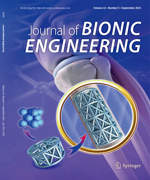In this paper we propose a data-driven motion control approach for a biomimetic robotic fish. The task of the motion control is to achieve desired motion by means of controlling the fish-like swimming gaits of the robot. Due to the complexity of hydrodynamics, it is impossible to derive an analytic model that can precisely describe the interaction between the robotic fish and surrounding water during motion. To address the lack of the robotic model, we explore data-based modeling and control design methods. First, through biomimetic learning from real fish motion data, a General Internal Model (GIM) is established. GIM translates fish undulatory body motion into robotic joint movement; associates the fish gait patterns, such as cruise and turning, with corresponding joint coordination; and adjusts the robotic velocity by GIM parameters. Second, by collecting robotic motion data at a set of operating points, we obtain the quantitative mapping from GIM tuning parameters to robotic speed. Third, applying the quantitative mapping and using GIM parameters as manipulating variables, a feedforward control is computed according to the desired speed, which greatly expedites the initial movement of the robotic fish. Fourth, Propor-tional-Integral-Derivative (PID) is employed as feedback control, together with an inverse mapping that compensates for the nonlinearity appeared in the quantitative mapping. Fifth, modified Iterative Feedback Tuning (IFT) is developed as an appro-priate data-driven tuning approach to determine controller gains. By switching between feedforward and feedback, the motion performance is improved. Finally, real-time control of robotic fish is implemented on a two-joint platform, and two represen-tative swimming gaits, namely “cruise” and “cruise in turning”, are achieved.

 Table of Content
Table of Content
 Table of Content
Table of Content